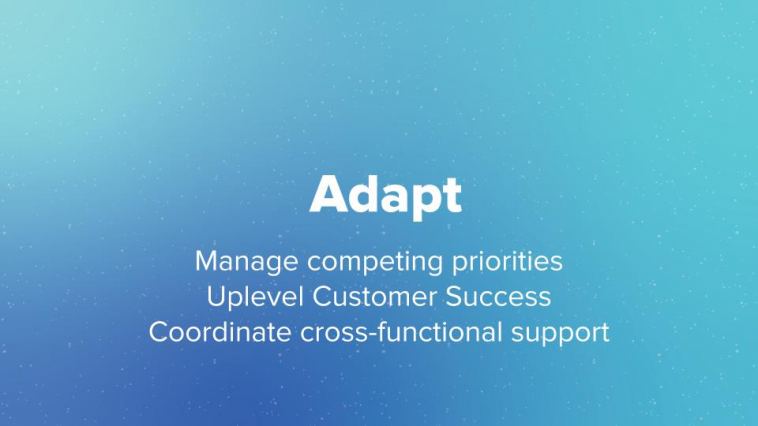- Like
- SHARE
- Digg
- Del
- Tumblr
- VKontakte
- Flattr
- Buffer
- Love This
- Save
- Odnoklassniki
- Meneame
- Blogger
- Amazon
- Yahoo Mail
- Gmail
- AOL
- Newsvine
- HackerNews
- Evernote
- MySpace
- Mail.ru
- Viadeo
- Line
- Comments
- Yummly
- SMS
- Viber
- Telegram
- JOIN
- Skype
- Facebook Messenger
- Kakao
- LiveJournal
- Yammer
- Edgar
- Fintel
- Mix
- Instapaper
- Copy Link
We recently brought together a powerhouse panel of women in revenue to discuss when, why, and how a company should consider going upmarket.
Kelly Del Curto, Senior Director of Sales @ Lever, joined with Tammy Aguillar, Area VP, Commercial Sales @ DocuSign, Kate Earle Jensen, Head of Platform Sales @ Stripe, and Lauren Schwartz, VP of Enterprise Sales @ Fivetran share the following suggestions about how to move your sales organization into larger markets.
# 1 Build
Regardless of the size or stage of your company, the “Why” of turning upmarket must be understood and communicated throughout the company. Our panel said it’s crucial to define an initial Ideal Customer Profile (ICP) before building a team for an upmarket effort. Keeping the marketing team aligned with the sales team and product team is imperative before going upstream.
Your ICP will help your org know who they’re selling to and why. When determining if a prospect is considered ‘upmarket’ or not, you can measure this in a couple of ways. Usually either by the number of employees or company revenue. But keep in mind that employee count isn’t always indicative of company size, ARR or funding, and so typically revenue is the more important metric.
But how do you know if you’re ready to go upmarket? Well, it depends on your company’s stage and overall readiness. Are your customers, investors, or the board asking for it?
Selling to larger businesses can mean more revenue, faster growth, and expansion, but it also brings the need for planning, increased expenses, and heightened exposure.
Differentiating between Small and Medium Businesses (SMB) and Enterprise, or larger companies, is vital. You’ll need to find and hire different types of sales reps, specifically to sell into the Enterprise since enterprise sales are more challenging and typically take longer than selling into an SMB. Selling to SMBs, by contrast, is fast-paced, and a single rep can typically handle several deals at once. There are higher stakes with Enterprise; selling can be done internally and externally, but sales cycles are longer, and reps can’t balance as many deals as SMB reps.

# 2 Adapt
When moving from SMB to Enterprise, shifts in strategy can be stressful. It requires commitment on all levels, and you have to stay agile because investments for higher-end companies can cause downstream changes to smaller teams, often resulting in a more extensive customer base. Larger accounts will require uplevel customer service, and some companies have a team dedicated to just that. As your company moves upmarket, your once ‘flat’ org will divide into different teams, i.e., customer success, new sales, technical sales, and account planning — all of which are critical for expanding into the Enterprise. Also, keep in mind that Enterprise sales are done as a team where SMB can be accomplished with a single salesperson.
#3 – Sustain
Renewals and ongoing success is achieved by conducting critical checkpoints as the relationship progresses. Coordinating cross-functional support where everyone agrees on the value drivers behind the product offered is essential for sustaining the relationships when choosing to go upmarket. You’ll have to prove to your prospects that you’re Enterprise-ready, even after making a name for yourself with SMBs.
For long term growth, be ready to build a reliable pipeline to “land and expand.” Set up an enterprise-facing outbound team and see which teams within larger companies you can work with as a way to get your foot in the door and lay the path for a long term customer.
As you begin to move upmarket, it’s essential to hold debriefings to learn what went well and what didn’t work, internally and externally. While the first few cycles won’t be definitive, they can help for both closed-won and closed-lost deals. Enterprise-proof your business by listening to their customers. Know how they buy and what they need out of your product so that you can tie your roadmap into what they need most.
Key Takeaways
1) Define and differentiate “why”
2) Ruthlessly prioritize and coordinate
3) Develop consistent, reliable practices – sustainability depends on it
Design a product roadmap and invest in support, building, investing, and scaling. Develop account plans, coordinate, communicate, and teach your people what direction to run in. Over time, as you win more Enterprise logos, you will have built a robust business. Now, go sell upmarket!


